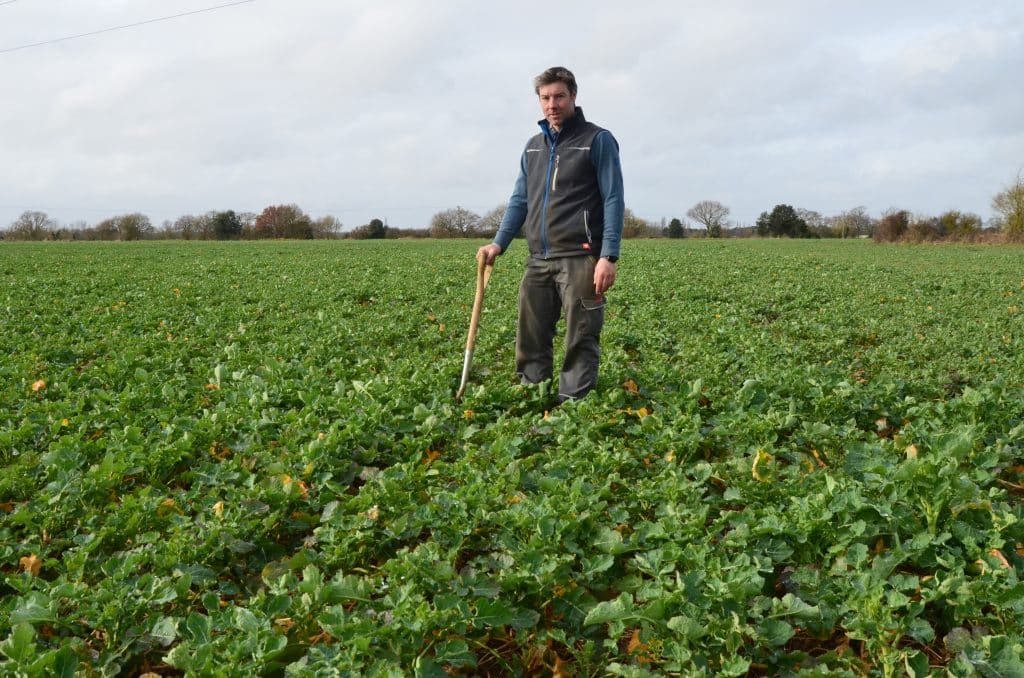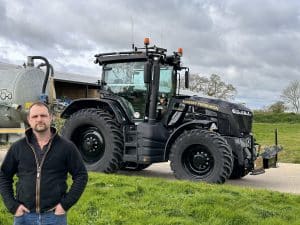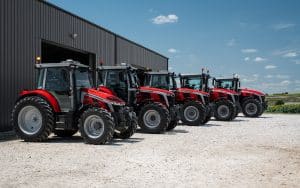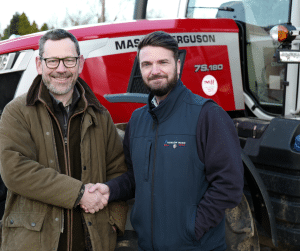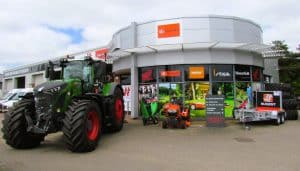Direct drilling reduces costs and transforms soils on Suffolk farms
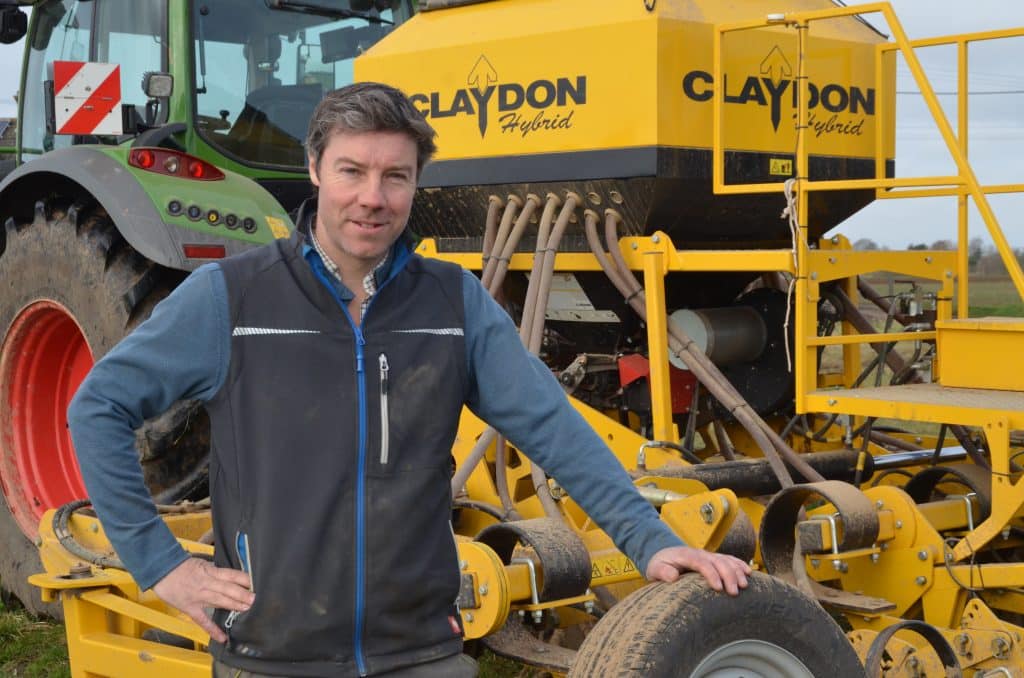
Changing from a full plough-based crop establishment system to direct drilling using the Claydon Opti-Till® system has proved transformational for family farming business T. G. Harris & Son. The numerous benefits include significant improvements in soil health, much lower weather risk and a reduction in annual fuel use of 10,000 litres, an approximate 35% saving.
It was James’s great, great grandfather who, on the back of a successful career in the ribbon trade, purchased Richardsons Farm at East Bergholt in 1919. In 1953 his grandfather increased the area of the farm with the purchase of a slightly heavier land farm at Assington near Sudbury. In 1993 James’s father George further increased the size of the farm with the purchase of a light, free-draining farm at Lawford near Manningtree.
Fourth-generation James has just added a further area at Assington, bringing the total area farmed to 1,800 acres in four blocks. His aim is to take the business to 2,000 acres in the hope that his two young daughters will eventually carry on the family tradition.
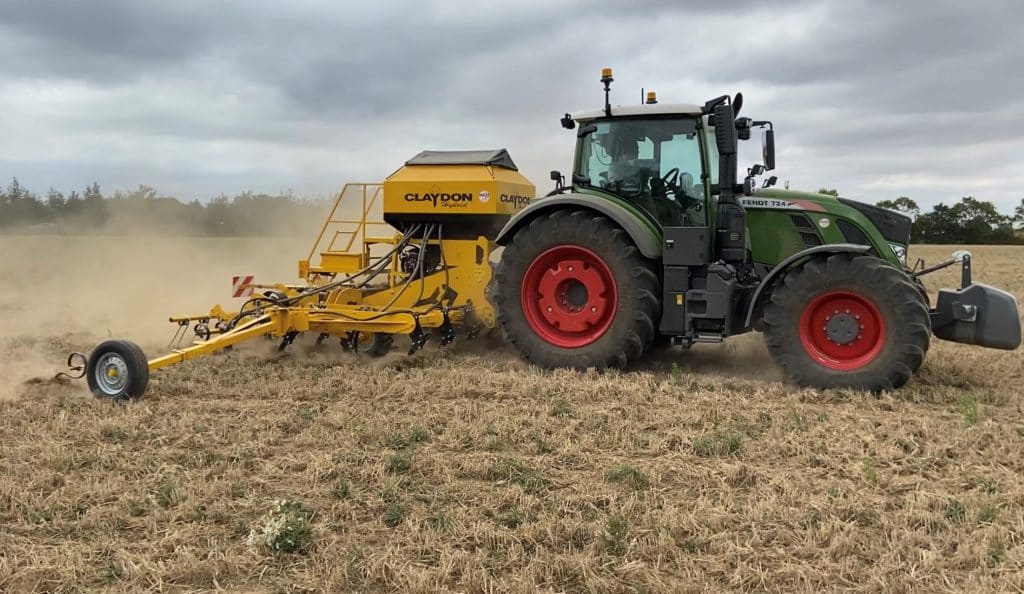
“This is our fourth season of using Claydon Opti-Till® and it has completely transformed what we do,” says James. “Until 2019 we ploughed everything but even working with two five-furrow Kverneland LD85 reversible ploughs behind John Deere 6210 (210hp) and 6155 (150hp) tractors it took 20 days, working 12-hours a day, starting in mid-August and working solidly until early September.
“After the land had been ploughed we went over it with a set of Cousins rolls, then spring tine cultivated. We drilled the main part of each field with a 4m Vaderstad Rapid and the headlands with a 4.8m tine seeder to take out any compaction. Even with two full-time employees, it was a struggle to get all the work done on time and in optimum conditions, although we still plough following sugar beet.
Currently, the family’s 1,800 acres are split two-thirds into winter wheat, mostly for feed, together with malting barley, the remainder growing peas, beans and sugar beet. In common with most farming businesses the Harris’s main concerns are exceptional volatility of input and output prices, together with unpredictable weather and the wider geopolitical issues which impact on world commodity markets.

Outlining the reasons for changing to the Claydon Opti-Till® system James states:
“The plough-based system had always worked well, and our wheats reliably achieved the target average of 3.5 tons an acre. However, with increasing fuel and metal costs, more extreme weather patterns, and an increased interest in soil health we decided to look at other options. My father has always liked to try new ideas, but even though we had heard good things said about Claydon Opti-Till® I was still sceptical when he arranged for a Claydon drill to be demonstrated. Conditions weren’t easy in the spring of 2019, but after Taig Norman (Claydon’s Territory Manager for the East of England) drilled 75 acres of spring barley with a 4m trailed Claydon we had a reasonable crop.
“I became interested in this approach, read a lot about it and talked to several owners, but visiting Donald and Stuart Macaulay at Hardy’s Green near Colchester really sold me on this approach. They had purchased a Claydon drill in 2015 and found that it involved much less time, fuel and cost, then bought a Claydon Straw harrow to enhance the system’s effectiveness. I couldn’t believe the condition and health of their soils. Even on a wet day at 12” deep it was in great condition; friable, loose, yet able to carry the weight of a sprayer or spreader, whereas ours was ‘puggy’. The difference was so apparent that I realised that this had to be the way forward on our own farm.
“My father was looking to take more of a back seat, so the labour-saving benefits of the Claydon system was attractive, as were the potential fuel savings at a time when input costs were rising sharply. For those and other reasons we ordered a 4.8m Claydon M4 mounted drill with an additional set of front discs to cut through any surface trash, mainly pea haulm. We also bought a 7.5m Straw Harrow, as my conversation with Donald Macaulay made me realise that this was a key part of the system.
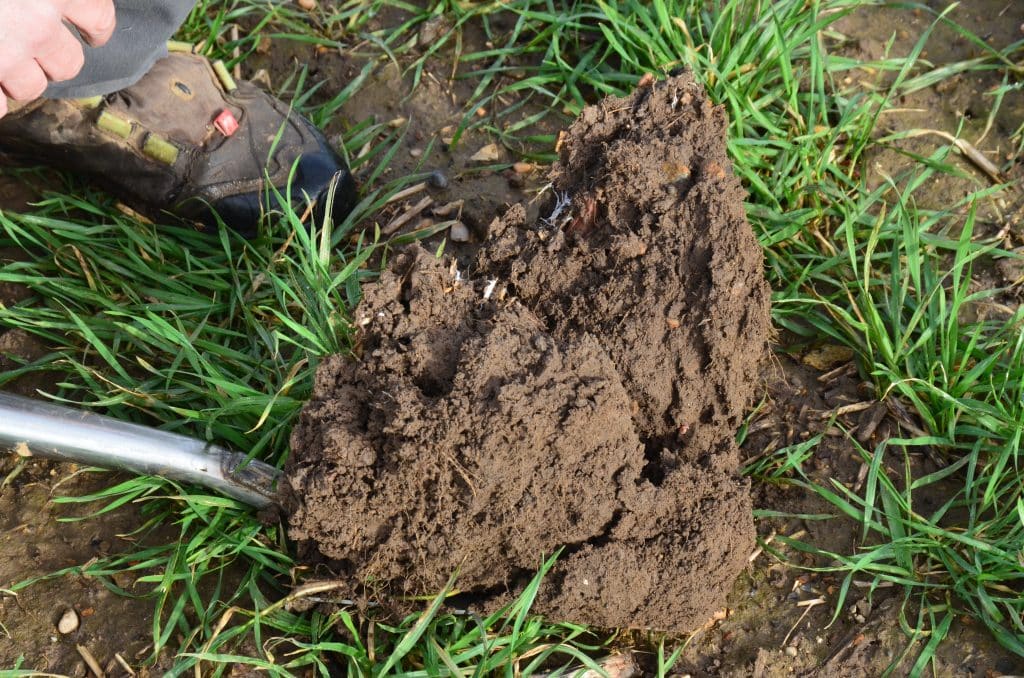
“When we started with Claydon Opti-Till® I asked Ian Robertson from Sustainable Soil Management to analyse our soils to give us a reference point to work from, a year-zero if you like. These showed that our soils, which we had thought were very good, were in fact very average with indices of 2 – 2.5. Although they contained plenty of potassium and phosphate not much of it was available to the crops. At plough depth a layer of straw from the previous year remained, so as much as we were trying to do the right thing it was obvious that improvements could be made.
“The first time we used the Claydon was after harvest 2020. Conditions were very dry, the chopped straw was well broken up and the land in ideal condition. This made straw harrowing and drilling remarkably simple. For the first time ever in autumn, even after going over the land twice with the Straw Harrow, we had time on our hands.
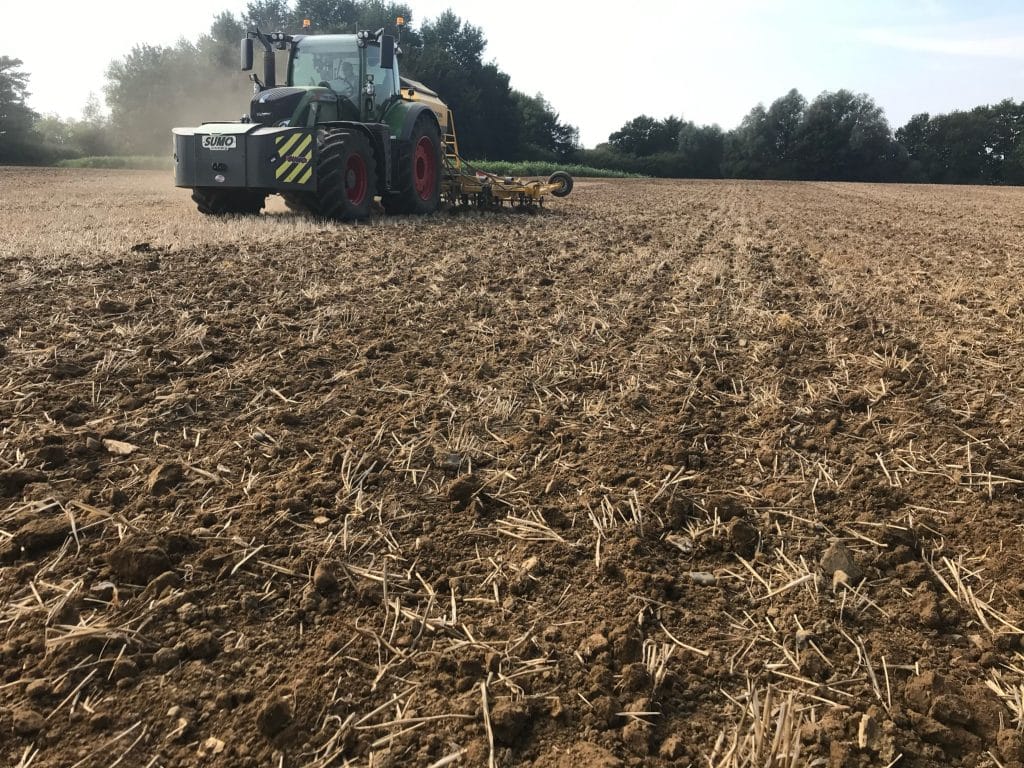
“We had always been used to seeing perfectly brown seedbeds with no straw showing, followed by even, narrow crop rows. It was the visual aspect of the new system which was perhaps the hardest thing for my father and me to get used to, because even after drilling the fields looked just like stubbles.
“We harvested our first Claydon-drilled crops in 2021, a year when there was more straw than normal. At the time we didn’t bale any, so the Straw Harrow had more to deal with than in most years and as the seed would be under a layer of straw I increased the rate by 10 per cent. At harvest we saw no drop in yield.
“Because of all the straw which we had to deal with that year, and following two hot, dry seasons, I wanted to move a little more soil and bought a Horsch Joker stubble cultivator for 2022. Starting in the second week of August, we worked the top two or three inches to encourage weed seeds and volunteers to chit, being careful not to go any deeper as the Claydon drill needs some resistance in the soil to work effectively.
“Seed distribution also seems better after discing and seed to soil contact was improved. Sometimes we roll after drilling for that reason, but it all depends on the weather. Much of our straw is now sold to a local contractor who bales it for use in a power station, so in spring we apply fibrophos, a phosphate, potash and trace element fertiliser which helps to maintain our levels.
“Since changing to Claydon Opti-Till® we have seen a dramatic change in the health and structure of our soils, even after just three seasons. The first sign was a big rise in the number of worm casts on the surface and more worms throughout the soil profile. The top layer has become much more fibrous and better structured, which improves drainage significantly and avoids water ponding on the surface.
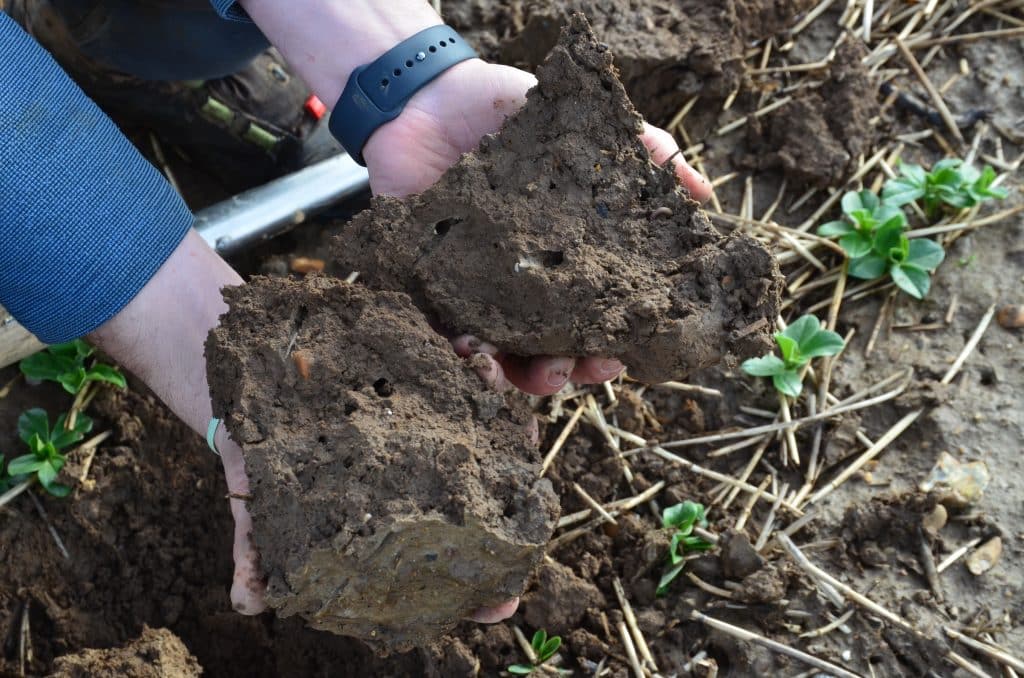
“Our soils have also become much more supportive, even after heavy rain, so following operations such as spraying with our 3000-litre/24m Bateman RB26 and fertiliser application with our 24m Kverneland Exacta GeoSpread on the John Deere 6155 are much timelier and hardly leave a mark. That is a huge change for the better.
“The reduction in BPS income is challenging for everyone and input costs are rising, but because that income shortfall is not reflected in higher output prices we are having to look for ways to reduce costs just to stand still. We have always been involved in HLS and CSS, and are part of the Stour Valley cluster, an organisation which is funding hedge planting, but more than ever I must keep my eye on the business side of things.
“Changing how we establish crops has brought significant benefits, from soil health to significant time and cost savings, while yields have held up well even in the very dry conditions of 2022. In a catchy season like we have had in 2023 I just don’t know how we would have fitted everything in had we still been using our previous approach.
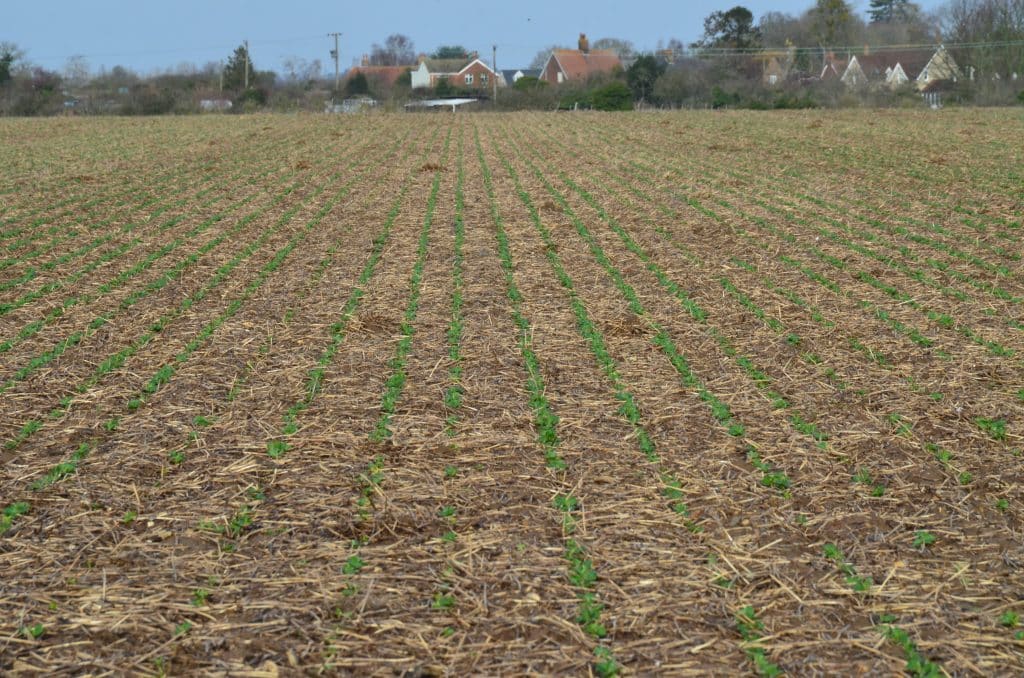
“It takes time and thought to change to a new system, but we have been so pleased with the Claydon that we recently ordered a new 4.8m Evolution M4.8 with hydraulic depth adjustment from our local dealer, Thurlow Nunn Standen. It’s due to be delivered in spring 2024 and will supplement the original, further improving the timeliness and versatility of crop establishment. Used behind two Fendt 724 (240hp) tractors, they will enable drilling to be delayed, helping to combat grassweeds, yet still allowing us to achieve key sowing dates.”
